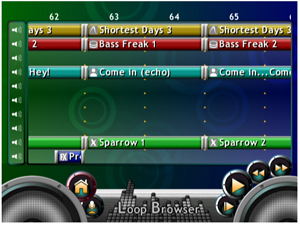 The Canadian War Museum is marking the 100th anniversary of Canada’s navy with a dynamic new online exhibition that brings Canada’s rich naval history to life. Canada’s Naval History is a compelling and substantial resource offering online access to an extraordinary range of evocative photographs and art, rare artifacts, fascinating archival documents, and educational materials.
The Canadian War Museum is marking the 100th anniversary of Canada’s navy with a dynamic new online exhibition that brings Canada’s rich naval history to life. Canada’s Naval History is a compelling and substantial resource offering online access to an extraordinary range of evocative photographs and art, rare artifacts, fascinating archival documents, and educational materials.
“Canada’s Naval History explores the wide range of this country’s naval experiences over the past century, making this a valuable addition to the Museum’s online offerings,” said Mark O’Neill, Director General of the Canadian War Museum. “This online exhibition is both an innovative means to preserve and share Canada’s naval history with all Canadians, and a wonderful way to mark the Canadian navy’s centennial.”
This new online exhibition allows users to explore Canada’s naval history from its origins to today. The exhibition showcases about 750 items in a contemporary, visually engaging format that will help to tell the story of the country’s naval history and highlight the experiences of the men and women associated with it. The exhibition will appeal to a wide range of visitors from across Canada and around the world, who can navigate the site to explore highlights from Canada’s naval collections, research the past and use a variety of educational resources.
The War Museum is committed to the continued development of freely accessible, bilingual information through web initiatives, and to presenting Canada’s unique history by preserving and providing access to a nationally important collection of artifacts, artworks, and archival material collected over the past 125 years. Past collaborations have led to the creation of the online exhibition Canada and the First World War, and the digital archive Democracy at War: Canadian Newspapers and the Second World War.
The Museum is also marking the navy’s centennial with a travelling art exhibition. The Navy: A Century in Art opens at the War Museum in Ottawa on Remembrance Day, November 11, and closes on March 20, 2011. It has been presented at The Military Museums in Calgary and at the Maritime Museum of the Atlantic in Halifax. Already, more than 85,000 patrons have viewed the exhibition.
Canada’s Naval History is funded in part by the Department of Canadian Heritage, and draws on a wide selection of material from the collections of the Canadian War Museum and its partners, including the Department of National Defence, the CFB Esquimalt Naval and Military Museum, the Naval Museum of Alberta, and the Naval Museum of Quebec.
The Canadian War Museum is Canada’s national Museum of military history. Its mission is to promote public understanding of Canada’s military history in its personal, national and international dimensions.
The Canadian War Museum’s new online exhibition, Canada’s Naval History, provides a fascinating and extensive overview of the country’s naval history in war and peace over the past century. The exhibition’s launch takes place during the centennial year of Canada’s navy, which was created in 1910.
Visitors to the online exhibition will discover almost 750 historical objects, photographs, artworks and archival documents that have been photographed and digitized specifically for this project. Each item can be examined in detail and is accompanied by an extensive caption.
Drawn from the collections of the Museum and its partners, the Department of National Defence, the CFB Esquimalt Naval and Military Museum, the Naval Museum of Alberta, and the Naval Museum of Quebec, these artifacts present Canada’s unique naval heritage, including the experiences of Canadians at sea and ashore, and the navy’s roles in war and peace.
Canada’s Naval History contains seven main sections:
1. Introduction – Michael Whitby, the distinguished Senior Naval Historian at the Department of National Defence’s Directorate of History and Heritage, provides an overview of the Canadian naval experience since 1910.
2. Explore History – Presents Canada’s naval history across the past century, including the birth of the navy (1910-1914), the First World War (1914-1918), the interwar period (1919-1939), the Second World War (1939-1945), the early Cold War, including the Korean War (1945-1968), the later Cold War (1968-1990) and the navy today (1990-2010).
3. Special Themes – Presents works from The Navy: A Century in Art, a travelling naval art exhibition created by the Canadian War Museum, and materials relating to naval culture and traditions
4. Objects and Photographs – Allows visitors to explore the exhibition’s collection of artifacts, photographs, maps, documents and artworks.
5. Teacher Resources – Offers educators and students of all ages access to a wide variety of activities and curriculum-linked programs based on content presented in the exhibition. Visitors can also find resources that include references for further reading and links to external online resources.
6. Navy at 100 – Contains information and links for events and programs related to the Canadian navy’s centennial celebrations.
7. My Navy – Allows visitors to store their favourite objects and exhibition content for future reference.
 In honour of Remembrance Day, Ancestry.ca, Canada’s leading family history website1, today announced the first ever online launch of the largest collection of Canadian military records related to the death and burial of soldiers who fought in the First World War. The company has also announced that select Canadian, US and British military records will be available for free from November 11 to 14, 2010.
In honour of Remembrance Day, Ancestry.ca, Canada’s leading family history website1, today announced the first ever online launch of the largest collection of Canadian military records related to the death and burial of soldiers who fought in the First World War. The company has also announced that select Canadian, US and British military records will be available for free from November 11 to 14, 2010.
The collections, Canada, CEF Commonwealth War Graves Registers, 1914-1919, and Canada, CEF Burial Registers, First World War, 1914-1919 will be of immense interest to the millions of Canadians with ancestors who fought in the Great War. For the 30 per cent of Canadians who claim not to know whether their ancestors took part, the collections can help them potentially make discoveries about previously unknown military heroes in their family tree.
Individual records contain rich information about the soldiers who fought, such as their unit number, religious affiliation, date of death, circumstances of death, burial and name of nearest relative (next of kin).
The new collections will add to what is already the largest online collection of Canadian military records; one that includes Soldiers of the First World War, which contains the original Attestation Papers of all the 600,000 Canadians who enlisted. Soldiers of the First World War, along with all US and select British military collections, will be free to access from November 11 to 14.
Canada, CEF Commonwealth War Graves Registers, 1914-1919 contains more than 43 thousand records detailing the circumstances of death of approximately two thirds of the 68,000 Canadian soldiers who fought and died in the First World War in Belgium, France and the United Kingdom.
Canada, CEF Burial Registers, First World War, 1914-1919 detail the temporary and final resting place of Canadian soldiers who made the ultimate sacrifice in the First World War. The authorities at the time kept track of the name and place of temporary burial locations. After the war, remains were brought together in the vast national military cemeteries.
Ancestry.ca Managing Director Karen Peterson comments: “Millions of Canadians have had an ancestor or a loved one sacrifice to serve our country, and some may not even be aware of their military heritage and how proud they should be. These new collections will offer so many an opportunity to discover more details about their ancestors’ invaluable and courageous contributions.”
Of interest in the collections is the date April 9, 1917, which stands out not only as the first day of the Battle of Vimy Ridge, but also as the date with the most Canadian deaths recorded in this collection, with records of death for 4,344 Canadian soldiers.
The Battle of Vimy Ridge was fought against the Germans in the Nord-Pas-de-Calais region of France from April 9 to 12, 1917. The brave Canadian troops managed to capture the ridge within three days – a key turning point in the War in spite of the massive casualties suffered by the Canadian troops.
September 15, 1916 was another day of infamy, which is reflected in the death records for 1,832 Canadian soldiers. This date marked the last great Allied effort to achieve a breakthrough in the Somme Offensive, in the Battle of Flers-Courcelette. Two Canadian divisions were part of the battle that is remembered historically for being the first ever to feature tank warfare.
The collections also provide opportunities for Canadians to learn the details of the death and final resting grounds of some of the key figures of the war, including:
* John McCrae (1872-1918) – soldier and poet; author of the famous poem recited by Canadians of every age at Remembrance Day, In Flanders’ Fields
* George Lawrence Price (1898-1918) – the last Commonwealth soldier killed in the First World War. Price was shot and killed at 10:58 a.m., November 11, 1918, just two minutes before the armistice ceasefire that ended the war went into effect at 11:00 a.m.
* Henry Norwest (1884-1918) – the most famous sniper in The Great War, he held a record 115 fatal shots and was often selected for special missions due to his superb stealth tactical skills and expert use of camouflage
These collections were created by the Ministry of the Overseas Military Forces of Canada, predecessor of the Department of National Defense. Along with all of Ancestry’s military collections, they can now be accessed at www.ancestry.ca/Remember.
Access to this collection, along with the other 128 million historical Canadian records available at Ancestry.ca, is part of the reason the company was recently short-listed by Canada’s History Society for the 2010 Pierre Berton Award, Canada’s top history prize, recognizing excellence in bringing Canada’s history to a wider popular audience.
 Canadian Innovation Exchange has just announced the 25 finalists for Canada’s Hottest Innovative Companies, selected to present at CIX. There was a particularly large number of submissions from amazing companies, and the Selection Committee had an extremely difficult time in narrowing down the list of presenters.
Canadian Innovation Exchange has just announced the 25 finalists for Canada’s Hottest Innovative Companies, selected to present at CIX. There was a particularly large number of submissions from amazing companies, and the Selection Committee had an extremely difficult time in narrowing down the list of presenters. Print This Post
Print This Post
















